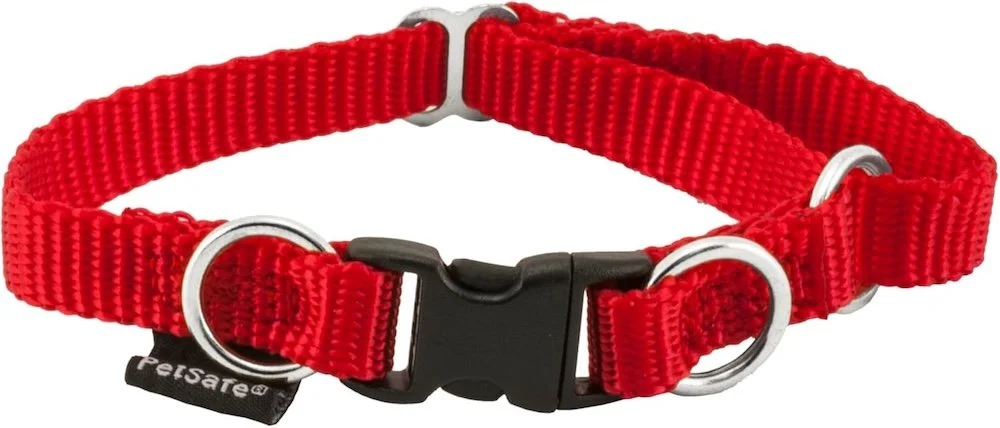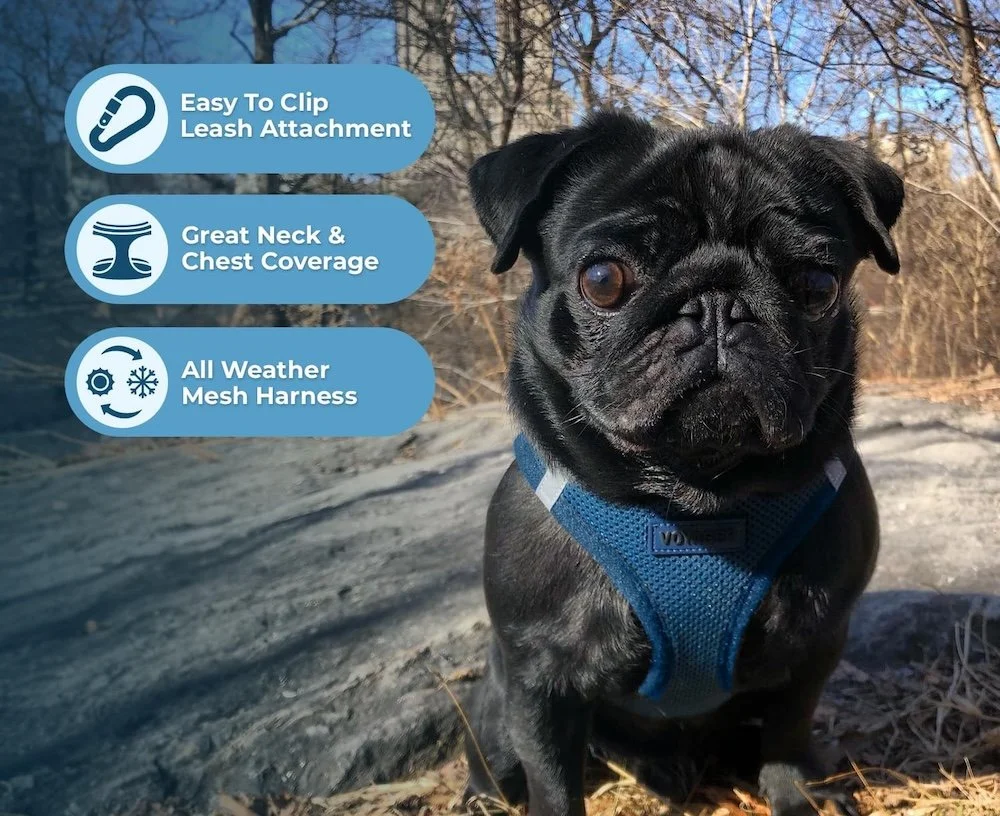Collars vs. Harnesses: Which Is Best for Your Dog’s Comfort and Safety?
When it’s time for a walk, the gear you choose can make a world of difference in your dog’s comfort and safety. Both collars and harnesses have their place, but knowing how they affect your pet’s body helps you make the best call for their size, age and walking style.
Harness or Collar? Choosing What’s Safest for Your Pup
Collars are simple and functional—they hold ID tags, slip on easily, and work well for calm, leash-trained dogs. But for smaller pups or those who tend to pull, a collar can put unnecessary pressure on delicate neck structures.
Potential downsides of collars:
Neck or throat strain: Pulling can injure the trachea and cause coughing or discomfort.
Eye pressure: Flat-faced breeds like pugs and shih tzus are especially at risk.
Escape risk: Narrow-headed breeds or squirmy small dogs can slip right out.
We recommend keeping collars for ID tags, but reaching for a harness when it’s time for a walk.
Harnesses: Designed for Comfort and Control
A harness distributes pressure across the chest and shoulders instead of the neck. This makes it a safer, more comfortable choice for most dogs, especially small breeds, puppies and seniors.
An example of a harness.
Why we love harnesses for smaller dogs:
Protects the neck and trachea
Spreads weight evenly to prevent injury
Offers gentle control without choking
Doubles as a great training tool for puppies
Some harnesses even include handles—perfect for helping your little one up stairs or into the car.
Finding the Right Fit
A well-fitted harness should feel snug but not tight. You should be able to slide two fingers between the strap and your dog’s body.
Quick fit guide:
Small dogs: Soft, lightweight mesh or padded vest styles are ideal.
Pullers: A front-clip harness helps redirect energy forward, not upward.
Everyday walks: A back-clip harness is comfortable and easy to use.
Training or mobility support: Look for adjustable straps and built-in handles.
When to Use a Collar
Even if you walk your dog on a harness, collars still serve an important purpose for identification. Just make sure it fits properly, uses soft materials, and is removed during crate time or rough play to prevent snagging.
What’s Best for Your Dog?
Small or toy breeds: Harness
Strong pullers: Front-clip harness
Calm, leash-trained dogs: Either works—just ensure proper fit
Puppies: Harness for gentle training
Seniors: Harness to prevent neck or joint strain
Safer Walks, Happier Dogs
Before every walk, check that your dog’s gear fits well and is in good shape. Use a sturdy, non-retractable leash for better control, and reward calm walking with plenty of praise (and treats, of course).
The Takeaway
For most dogs—especially smaller breeds—a harness offers safer, more comfortable walks and better control. Keep the collar for ID tags, but rely on a harness for your daily strolls. The right gear means less stress, fewer injuries, and more happy adventures together.
Need Help Finding the Perfect Fit?
Our Perry Paws Mobile Veterinary team can help you choose the best harness or collar for your dog’s unique needs, all from the comfort of home. Schedule a visit today, and let’s make every walk a safe and joyful one.



